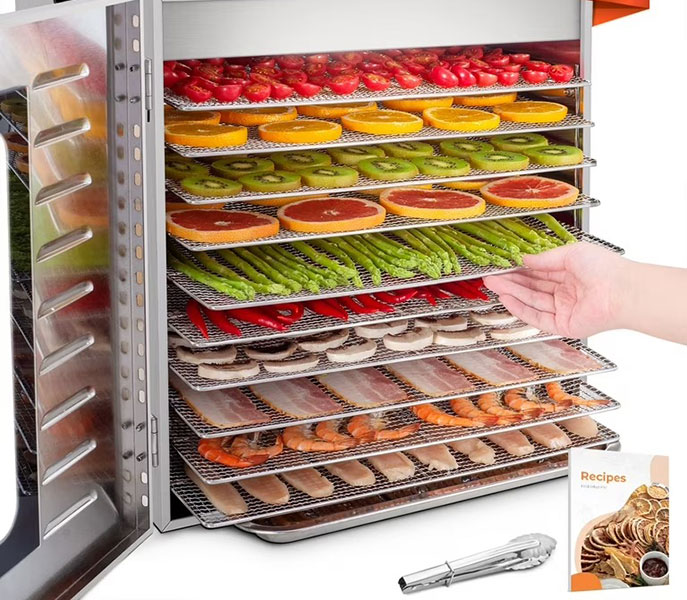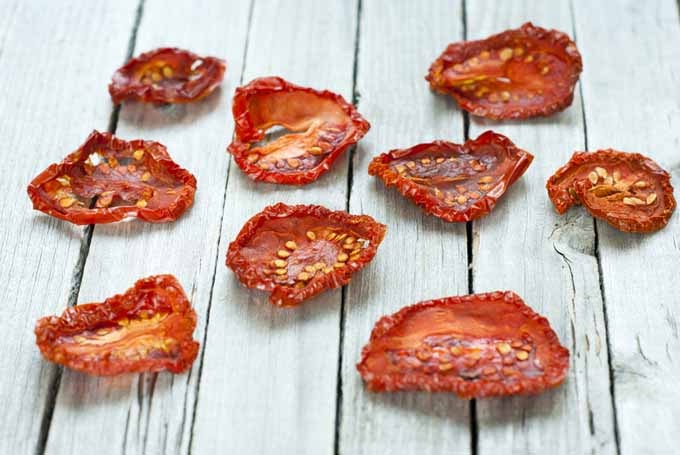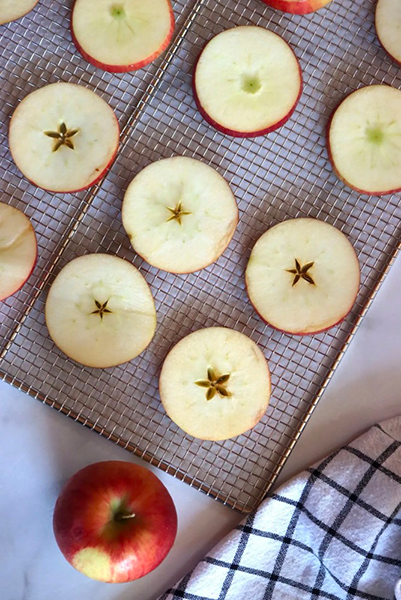
Content Menu
● Introduction to Commercial Fruit Dehydrators
>> Why Invest in a Commercial Dehydration System?
● Key Features of a High-Quality Commercial Fruit Dehydration Machine
>> 1. Precision Temperature Control (50–160°F)
>> 2. Advanced Airflow Design
>> 3. High-Capacity Stainless Steel Trays
>> 4. Energy-Efficient Performance
>> 5. Smart Automation & Safety Protocols
>> 6. Modular Design for Easy Maintenance
>> 7. Certifications and Compliance
● Applications in the Food Industry
● How to Choose the Right Commercial Dehydrator
● Maintenance Best Practices
● Conclusion
● Frequently Asked Questions
>> 1. What is the average lifespan of a commercial fruit dehydrator?
>> 2. Can I dehydrate meat or fish in a fruit-focused machine?
>> 3. How much floor space does a commercial dehydrator require?
>> 4. What's the ROI timeline for a commercial dehydrator?
>> 5. Do you provide customized drying programs for exotic fruits?
● Citations:
As a leading OEM manufacturer of food dehydration equipment in China, we specialize in producing commercial-grade machines tailored for global brands and wholesalers. This article explores the critical features of a commercial fruit dehydration machine, its operational advantages, and best practices for maximizing efficiency.

Introduction to Commercial Fruit Dehydrators
Commercial fruit dehydrators are industrial-grade appliances designed to remove moisture from fruits efficiently, preserving their nutritional value and extending shelf life. These machines cater to large-scale operations such as food processing plants, organic snack manufacturers, and agricultural cooperatives. Unlike residential dehydrators, commercial fruit dehydration machines prioritize durability, precision, and high throughput to meet demanding production schedules.
Why Invest in a Commercial Dehydration System?
- Scalability: Process hundreds of kilograms of fruit daily.
- Consistency: Deliver uniform drying results across batches.
- Compliance: Meet international food safety standards (e.g., HACCP, ISO 22000).
Key Features of a High-Quality Commercial Fruit Dehydration Machine
1. Precision Temperature Control (50–160°F)
A top-tier commercial fruit dehydration machine offers adjustable temperature ranges to accommodate diverse produce. For example:
- Delicate herbs: 90–100°F to retain volatile oils.
- Fruits/vegetables: 130–160°F for efficient drying without nutrient loss.
Digital thermostats with ±2°F accuracy ensure optimal conditions, preventing under-drying or overheating.
2. Advanced Airflow Design
Horizontal airflow systems dominate premium models due to their even heat distribution, eliminating the need for tray rotation. Key variations include:
- Vertical airflow: Cost-effective but requires manual tray swapping.
- Forced-air technology: Accelerates drying by 30% compared to passive systems.
3. High-Capacity Stainless Steel Trays
- Material: Food-grade 304 stainless steel resists corrosion and simplifies cleaning.
- Capacity: 12–30 trays per unit, supporting 50–200 kg per cycle.
- Customization: Trays with mesh inserts or solid surfaces for different textures (e.g., fruit leathers vs. diced mangoes).
4. Energy-Efficient Performance
Modern commercial fruit dehydration machines reduce power usage by 40–60% compared to conventional ovens, thanks to:
- Insulated chambers: Retain heat effectively.
- Inverter technology: Adjusts fan speed based on load size.
- Off-peak operation: Programmable timers for energy-cost optimization.
5. Smart Automation & Safety Protocols
- Programmable presets: One-touch settings for common fruits (apples, berries, etc.).
- Safety features: Overheat shutdown, door interlocks, and moisture sensors.
- Remote monitoring: IoT-enabled models allow real-time adjustments via smartphones.
6. Modular Design for Easy Maintenance
- Quick-access panels: Simplify filter replacements and motor inspections.
- Self-diagnostic systems: Alert technicians to issues like fan malfunctions or airflow blockages.
7. Certifications and Compliance
Reputable commercial fruit dehydration machines adhere to:
- Electrical safety: CE, UL, or ETL marks.
- Food contact compliance: FDA-approved materials.
- Environmental standards: RoHS and REACH for eco-conscious markets.

Applications in the Food Industry
- Snack production: Create crispy apple chips or chewy banana slices.
- Ingredients for bakeries: Dehydrated berries for muffins or trail mixes.
- Export-grade products: Sulfite-free dried pineapples for health-focused markets.
How to Choose the Right Commercial Dehydrator
1. Throughput Needs: Match tray capacity to daily production goals.
2. Energy Ratings: Compare kWh/kg ratios across models.
3. After-Sales Support: Opt for suppliers offering 24/7 technical assistance and spare parts.
4. Customization: Request OEM modifications like extra-wide trays or humidity controls.
Maintenance Best Practices
- Daily: Clean trays and filters to prevent bacterial growth.
- Monthly: Inspect heating elements and calibrate thermostats.
- Annual: Replace worn gaskets and lubricate fan bearings.
Conclusion
A commercial fruit dehydration machine is a strategic investment for businesses aiming to scale production while maintaining product quality. By prioritizing features like precision temperature control, robust airflow, and smart automation, manufacturers can optimize ROI and meet evolving market demands.

Frequently Asked Questions
1. What is the average lifespan of a commercial fruit dehydrator?
With proper maintenance, high-quality machines operate for 8–12 years. Stainless steel models outlast plastic counterparts by 3–5 years.
2. Can I dehydrate meat or fish in a fruit-focused machine?
Yes, but ensure the unit reaches 160°F+ for meat safety. Dedicated protein dehydrators may offer higher temperature ranges.
3. How much floor space does a commercial dehydrator require?
Compact models (e.g., 12-tray units) fit in 10 sq. ft., while industrial systems may need 50+ sq. ft.
4. What's the ROI timeline for a commercial dehydrator?
Most businesses recoup costs in 12–18 months through reduced waste and increased production capacity.
5. Do you provide customized drying programs for exotic fruits?
Yes, OEM clients can request tailored temperature/time profiles for niche products like dragon fruit or jackfruit.
Citations:
[1] https://tribest.com/collections/commercial-grade-products/products/sedona-supreme-sdc-s101-b
[2] https://www.seriouseats.com/best-food-dehydrators-5216308
[3] https://pleasanthillgrain.com/resources/dehydrators-buying-guide
[4] https://www.made-in-china.com/products-search/hot-china-products/Industrial_Food_Dehydrator_Machine.html
[5] https://www.youtube.com/watch?v=OajsCNxW15g
[6] https://www.webstaurantstore.com/guide/741/food-dehydrators-buying-guide.html
[7] https://www.linkedin.com/pulse/common-questions-food-dehydrators-aradmachinery
[8] https://www.mitchellcooper.co.uk/what-is-a-dehydrator-commercial-buying-guide
[9] https://machine.goldsupplier.com/blog/best-commercial-dehydrator/
[10] https://www.commercialdehydrators.co.uk/post/best-practice-for-drying-fruit-and-vegetables-commercial-dehydrators
[11] https://www.thepurposefulpantry.com/dehydrating-faq/
[12] https://www.dehydratorsamerica.com/post/best-practice-for-drying-fruit-and-vegetables-commercial-dehydrators
[13] https://www.dryer.com/fruit-drying-times
[14] https://nymag.com/strategist/article/best-food-dehydrators.html
[15] https://www.reddit.com/r/dehydrating/comments/zh50og/best_dehydrator/
[16] https://www.linkedin.com/advice/0/what-factors-should-you-consider-when-selecting-7lkle
[17] https://www.dehydratorsamerica.com/category/industrial-food-dehydrators
[18] https://www.shutterstock.com/search/food-dehydrator
[19] https://www.foodandwine.com/lifestyle/kitchen/best-food-dehydrators
[20] https://pixabay.com/images/search/commercial%20fruit%20dehydrator%20machine/
[21] http://www.dryer.comcastbiz.net/faqs.html
[22] https://www.aromaco.com/faq/food-dehydrators/
[23] https://food-dehydrator.com/pages/dehydrator-faq
[24] https://www.benchfoods.com/products/60-tray-dehydrator
[25] https://septree.com/blogs/news/how-to-choose-the-right-commercial-dehydrator-for-your-business-or-homestead
[26] https://airtekdehydrator.com/blog/choosing-best-commercial-food-dehydrator/
[27] https://www.youtube.com/watch?v=ym5Sqyac7BE
[28] https://excaliburdehydrator.com
[29] https://www.ike.cn/video.html
[30] https://www.youtube.com/watch?v=IFugZm6TWzk
[31] https://www.webstaurantstore.com/video-4534/avantco-food-dehydrator.html











